Potřebujeme váš souhlas k využití jednotlivých dat, aby se vám mimo jiné mohly ukazovat informace týkající se vašich zájmů. Souhlas udělíte kliknutím na tlačítko „OK“.
ASTM F22-13
Standard Test Method for Hydrophobic Surface Films by the Water-Break Test
Automaticky přeložený název:
Standardní zkušební metoda pro hydrofobním povrchem filmy u vody-break test
NORMA vydána dne 1.11.2013
Informace o normě:
Označení normy: ASTM F22-13
Poznámka: NEPLATNÁ
Datum vydání normy: 1.11.2013
Kód zboží: NS-53159
Počet stran: 5
Přibližná hmotnost: 15 g (0.03 liber)
Země: Americká technická norma
Kategorie: Technické normy ASTM
Kategorie - podobné normy:
Anotace textu normy ASTM F22-13 :
Keywords:
contact angle, hydrophilic films, organic contamination, surface contamination, water break, ICS Number Code 25.220.20 (Surface treatment)
Doplňující informace
| Significance and Use | ||||||||||||||||
|
5.1 The water-break test as described in this test method is rapid, nondestructive, and may be used for control and evaluation of processes for the removal of hydrophobic contaminants. This test method is commonly used for in-process verification of the absence of surface contaminants on metal surfaces that may interfere with subsequent surface treatments such as priming, conversion coating, anodizing, plating, or adhesive bonding 5.2 This test method is not quantitative and is typically restricted to applications where a go/no go evaluation of cleanliness will suffice. 5.3 The test may also be used for the detection and control of hydrophobic contaminants in processing environments. For this application, a witness surface free of hydrophobic films is exposed to the environment and subsequently tested. The sensitivity of this test will vary with the level of airborne contaminant and the duration of exposure of the witness surface. 5.4 For quantitative measurement of surface wetting, test methods that measure contact angle of a sessile drop of water or other test liquid may be used in some applications. Measurement methods based on contact angle are shown in Test Methods C813, D5946, and D7490; and Practice D7334. 5.4.1 Devices for in situ measurement of contact angle are available. These devices are limited to a small measurement surface area and may not reflect the cleanliness condition of a larger surface. For larger surface areas, localized contact angle measurement, or other quantitative inspection, combined with water-break testing may be useful. 5.5 For surfaces that cannot be immersed or doused with water, or where such immersion or dousing is impractical, Test Method F21 may be useful. 1.1 This test method covers the
detection of the presence of hydrophobic (nonwetting) films on
surfaces and the presence of hydrophobic organic materials in
processing environments. When properly conducted, the test will
enable detection of molecular layers of hydrophobic organic
contaminants. On very rough or porous surfaces, the sensitivity of
the test may be significantly decreased.
1.2 The values stated in SI units are to be regarded as the standard. The inch-pound values given in parentheses are for information only. 1.3 This standard does not purport to address all of the safety concerns, if any, associated with its use. It is the responsibility of the user of this standard to establish appropriate safety and health practices and determine the applicability of regulatory limitations prior to use. |
||||||||||||||||
| 2. Referenced Documents | ||||||||||||||||
|
Podobné normy:
Historická
1.8.2009
Historická
1.5.2009
Historická
1.8.2012
Historická
1.4.2012
Historická
1.5.2014
Historická
1.5.2014
Doporučujeme:
Aktualizace technických norem
Chcete mít jistotu, že používáte pouze platné technické normy?
Nabízíme Vám řešení, které Vám zajistí měsíční přehled o aktuálnosti norem, které používáte.
Chcete vědět více informací? Podívejte se na tuto stránku.



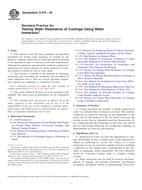 ASTM D870-09
ASTM D870-09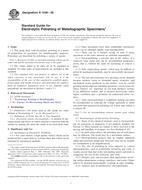 ASTM E1558-09
ASTM E1558-09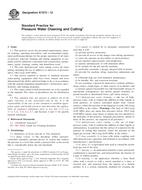 ASTM E1575-12
ASTM E1575-12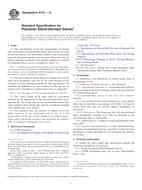 ASTM E161-12
ASTM E161-12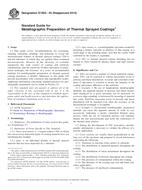 ASTM E1920-03(2014)..
ASTM E1920-03(2014)..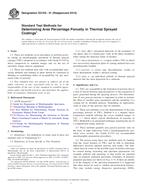 ASTM E2109-01(2014)..
ASTM E2109-01(2014)..
 Cookies
Cookies
